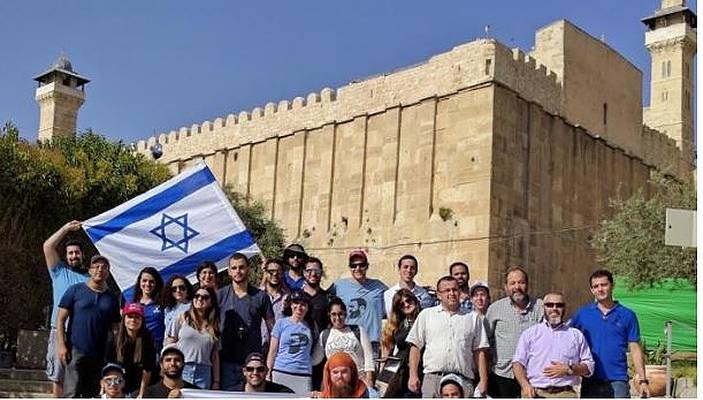Hebron is where it all began, and with this in mind, let’s go explore the city.
By Rabbi Ari Enkin, Rabbinic Director, United with Israel
This week’s Torah portion is “Chayei Sarah” (Genesis 23:1–25:18), and it we read about the City of Hebron.
Sarah dies at the age of 127 (she is the only woman in the Bible whose exact age is given!) and Abraham must bury her. This episode is the first mention of burial in the Scripture.
Abraham takes Sarah’s body to the city of Hebron and purchases the Cave of Machpelah, an already active cemetery, to bury her there. The men of Hebron, fully aware that Abraham was a prince of God, wanted to give him the land for free. But Abraham insisted on paying in full so that there be no confusion as to who owns that land.
So, although God Himself promised the entire Land of Israel to Abraham, our forefather went above and beyond and purchased it. He paid Ephron the Hittite the full market price — 400 shekels of silver.
Hebron is just over 30 kilometers south of Jerusalem and stands 930 meters above sea level, making it Israel’s highest city, besides the Golan Heights. It is a must visit for anyone who cares about the Bible, archaeology, and the rebirth of modern Israel. It is the second holiest city in Judaism and is mentioned close to 100 times in Scripture.
There are currently about 200,000 Arabs living on the “Palestinian side” and roughly 1,000 Jews on the Jewish side.
There were so many things in Scripture that took place in Hebron. For example, it is where Abraham pitched his famous tent of hospitality (Genesis 13:18, 18:1-14), where God changed Abram’s name to Abraham (Genesis 17:3-5), where Abraham argues with God to spare Sodom (Genesis 18:17-33), where most of the Patriarchs and Matriarchs are buried (Geneses 23:1-120, 25:7-10), where David ruled over Israel (2 Samuel 2:1-4), and so much more!
Visitors to Hebron can see all of the tourist sites in a single day. The most popular include the Cave of the Patriarchs (burial place of three biblical couples — Abraham and Sarah, Isaac and Rebekah, and Jacob and Leah, and according to Jewish tradition, Adam and Eve as well), the ancient Hebron archaeology site (known as Tel Rumeida), the tombs of Ruth and Jesse, the museum of Jewish settlement (Beit Hadassah), and more. The Gutnick visitor center right beside the Cave of the Patriarchs is where you can rest, eat a snack and get some tourist information.
The Cave of the Patriarchs is known as “Me’arat Hamachpela” in Hebrew, which literally means the “double cave.” It is called by this name in honor of the “doubles” (i.e., couples) buried there. Similarly, Hebron is also known as “Kiryat Arba,” which means “the city of four,” because it is the city of the four couples buried there: Adam and Eve, Abraham and Sarah, Isaac and Rebecca, and Jacob and Leah.
The second-most visited site in Hebron is the tomb of Ruth and Jesse, the father and great-grandmother of King David. For generations, people have visited the Tomb of Ruth and Jesse to pray there. So, too, as Ruth is the most famous convert to Judaism ever, many converts and those going through conversion to Judaism make a special effort to pray at Ruth’s grave, feeling a close connection with her.
Some archaeologists believe that the site may also be connected to King David, who established Israel’s first capital in Hebron. The site is an old stone cave-like building housing a small synagogue that is also used as a Kollel, a place where scholars study Torah all day long. The roof of the site offers a panoramic view of the city.
According to tradition Jesse was one of four righteous men who died free of sin and even entered heaven alive.
There is so much to say about Hebron and there is so much to see and do there! Be sure to put Hebron on your itinerary on your next trip to Israel.
